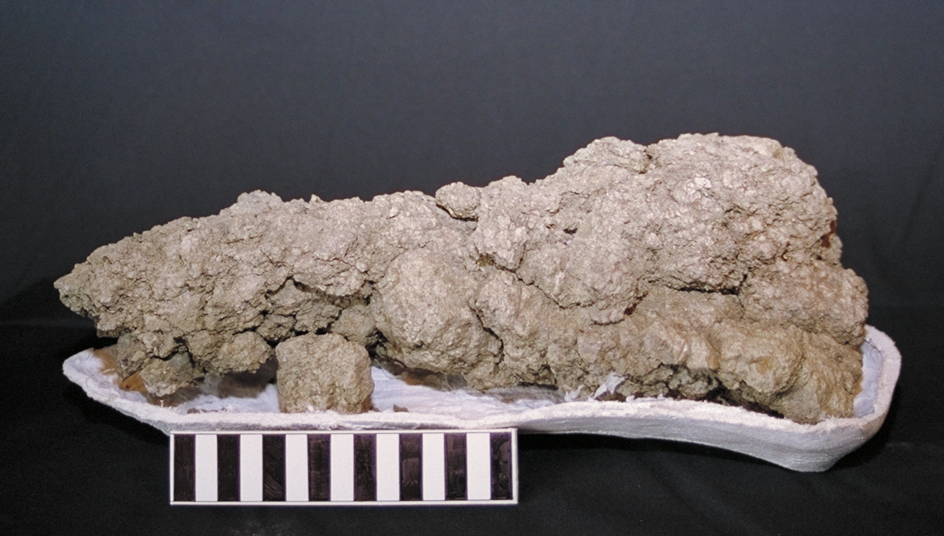Coprolite, << KAHP ruh lyt, >> is the fossil remains of solid animal waste, or feces. Scientists study coprolites to learn about the foods eaten by prehistoric animals. Coprolites have been found from a variety of animals, including dinosaurs. Prehistoric people also left coprolites. The oldest coprolites date from as long as 500 million years ago.

Coprolites range from tiny pellets as small as the head of a pin to fossils as large as 25 inches (64 centimeters) long. Large coprolites can have roughly the same volume as a basketball. Minerals in coprolites give them different colors, such as black, brown, cream, green, orange, or pink.
Coprolites may contain fragments of bones, fish scales, shells, teeth, leaves, seeds, wood, or other matter. These remains provide direct evidence about the foods eaten by extinct animals. Scientists can use coprolites to reconstruct ancient food webs, the feeding relationships between living things. For example, coprolites from Montana left by plant-eating dinosaurs have been found to contain fragments of conifers (cone-bearing trees). These same coprolites also contain traces left by dung beetles. These discoveries show that these particular plant-eating dinosaurs ate conifers, and dung beetles ate the feces from these dinosaurs. Thus, coprolites help scientists to build an overall view of how living things interacted millions of years ago.
Relatively recent coprolites may be preserved through desiccation (drying out completely). These coprolites may look as if they were deposited recently, even when they are thousands of years old. Older coprolites are preserved through transformation into rock, called lithification. This means that large dinosaur coprolites can be heavy, sometimes weighing more than 15 pounds (7 kilograms). Identifying lithified coprolites is difficult because many rocks have shapes that resemble animal waste. To determine whether a sample is a coprolite, scientists study its chemical composition, shape, size, contents, and geological setting. These features also can provide clues about which kind of animal left a coprolite. It is usually impossible to determine exactly which species of animal produced a coprolite. But scientists often can determine whether an insect, a fish, or a dinosaur left the feces.
